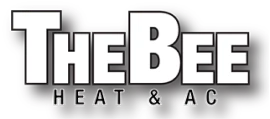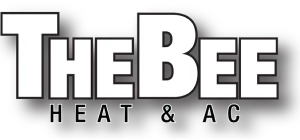Maintaining your air conditioning system is key to keeping it working properly. Just like with any other object, if you overuse or abuse it, the system can break down. In some cases, this damage might be irreversible, meaning you would need an entirely new system. Avoid pushing your HVAC beyond its limits by knowing what they are in the first place. This will help extend the life of your current unit and save you money in the long run.
On This Article
hide
1)
What is the 20-Degree Rule?
2)
Mistakes You’re Making With Your Air Conditioner
What is the 20-Degree Rule?
When choosing an air conditioner for your home, it is important to take into account how much insulation you have. The more insulation you have in your home, the faster it will be able to cool down. This rule of thumb applies generally; however, other factors such as ventilation can also affect indoor air temperature and should be considered when making a decision about installing an AC unit.
According to the 20-degree rule, your HVAC system will only lower the indoor temperature by 20 degrees. So, if your thermostat is 60 degrees, your air conditioner will continue to run even though 65 degrees is the coldest it can make you indoors.
However, continuing to run puts unnecessary strain on many parts of your HVAC system and causes early wear and tear–not to mention that it’s very common for systems to overheat from running constantly below the actual indoor temperature.
The US Department of Energy suggests that homeowners keep their thermostats set at 78°F during the day. Not only will this make hot days more bearable, but it’ll also save money since air conditioners use less energy when cooling a smaller space. Additionally, the slower heat moves indoors is much easier to manage and control.
Mistakes You’re Making With Your Air Conditioner
If you’re like most people, you probably forget to adjust the thermostat before leaving your house. A programmable thermostat can save you a lot of money on your annual AC bill by automatically raising the temp at those times of day when you’re not home
Whether you realize it or not, your body can adapt to hot and cold temperatures much quicker than you think–usually within one or two weeks. By raising your thermostat just a few degrees higher than what you’re comfortable with, you have the potential to cut 3% off of your AC bill. Additionally, using less AC overall, there are positive environmental impacts as well.
If your home has open AC vents in every room, you’re cooling off a lot of space that may not be used often. Close the AC vents in rooms that are not being occupied on a day-to-day basis. In addition, closing closet doors prevents those spaces from consuming your cold air. Excess sunlight can damage your AC system. By blocking the sun’s rays with blinds or curtains, you can protect your home from heat and potential damage.
If the sun or a nearby lamp shines on your thermostat for extended periods of time during the day, that could cause it to give inaccurate readings and make your AC work overtime even though your home is cool. Braun says that this can happen especially if you’re away during the day and don’t realize that your system is working harder than necessary due to a misplaced thermostat.
Another way to limit air circulation and cause issues with your AC is by blocking vents with furniture or curtains. Unless you spend most of your time huddled under your sofa, you’ll want to be sure that all of your AC vents are clear and unobstructed.
Ceiling fans are a great way to keep cool air circulating throughout your home, which can help reduce the workload of your AC system. Just be sure to set your ceiling fans to turn counterclockwise during summer months, as this will create greater airflow.

